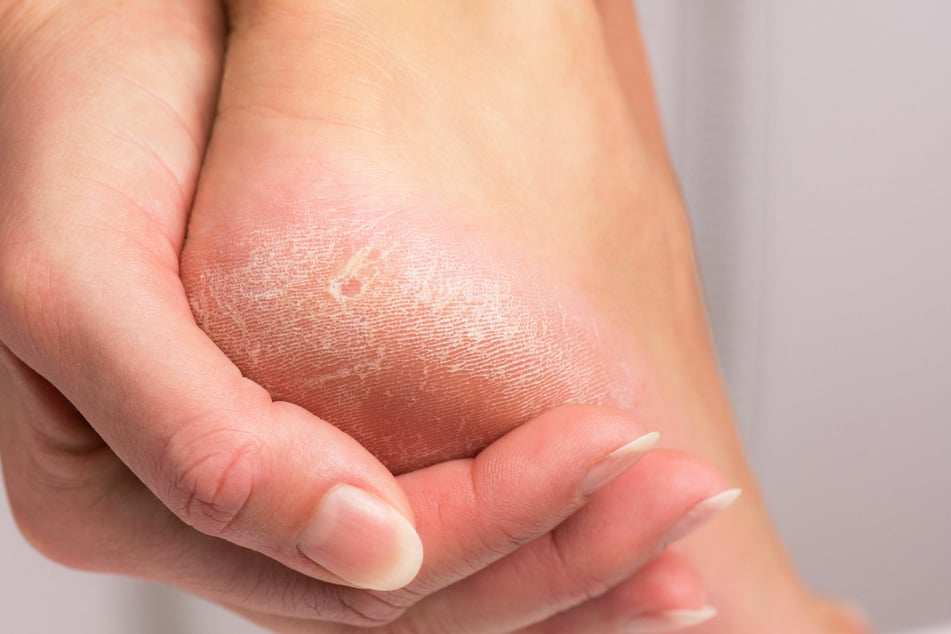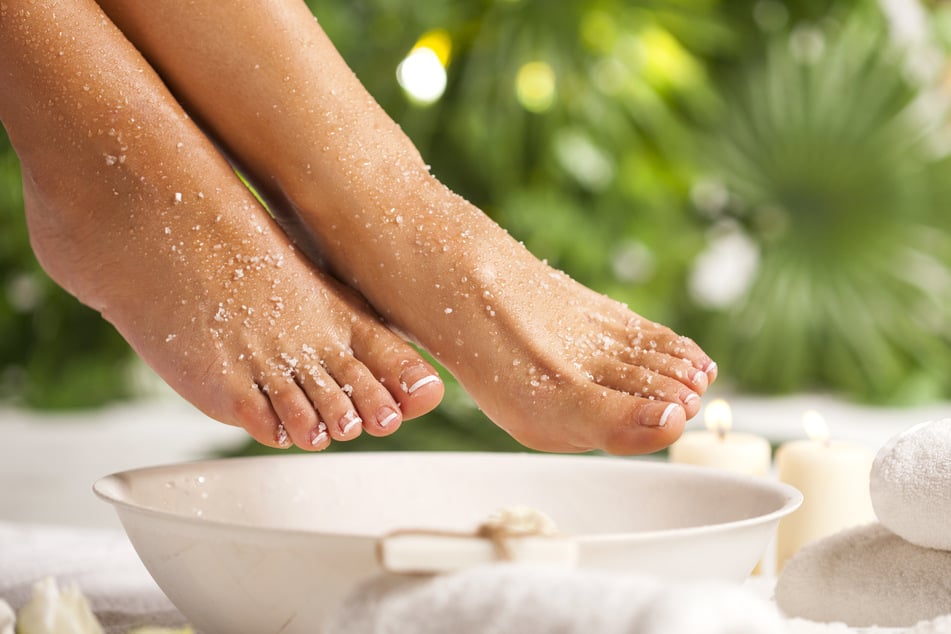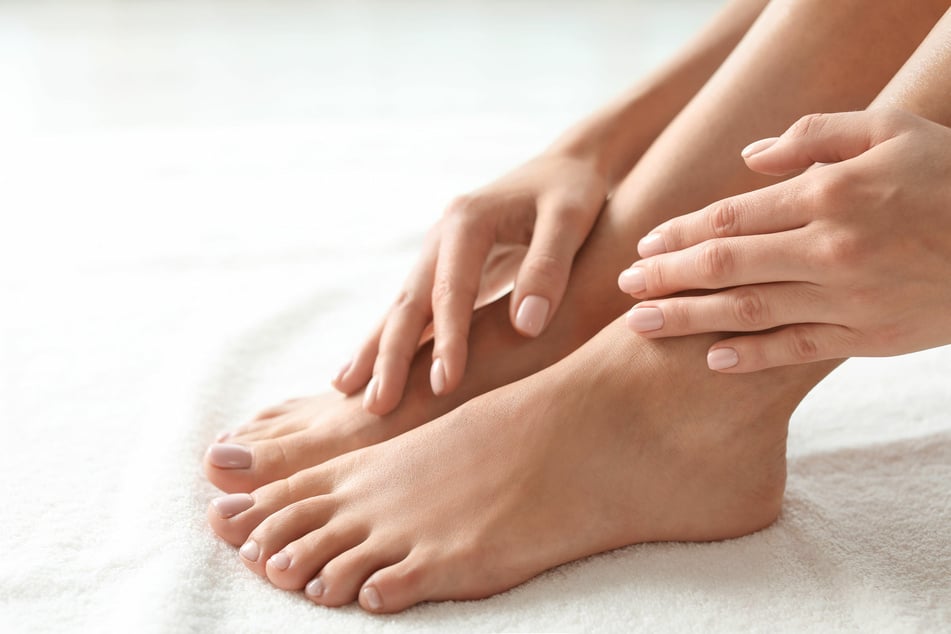How to remove calluses and make your feet feel soft again
Advice - While calluses are our body's natural response to repeated pressure and activity, they're certainly not attractive. But simple and natural remedies can help make your feet soft again in no time.
Calluses can also be helpful

Dermatologists don't recommend completely removing calluses because they form an important protective layer for the skin.
Calluses protect you from being exposed to outside irritants and pressure from tight shoes and excessive activity. The thick skin also makes it harder for bacteria and viruses to enter the body.
More active people, such as athletes and hikers, who put their feet under a lot of stress are more prone to get calluses. In these cases, calluses serve an important function and are better off staying where they are. Using a sharp tool to cut them off is definitely not a good idea, as breaking the skin can cause the area to become infected.
Take caution when using foot rasps
Foot rasps and pedicure planes used to be the most popular solution for the problem of foot calluses. But since their sharpness can lead to small wounds and injuries on your feet, experts have warned against using them.
Instead, pumice stones, sponges, and files work as great alternatives to guarantee gentle removal of excessive skin without further damage.
If you're ready to invest more than just a few dollars, an electric callus remover may be the way to go. It has an ergonomic body and a rotary abrasive on one end to effortlessly get rid of calluses. Special sets of manicure and pedicure tools are available in a similar price range.
It's important that whatever device you're using can be easily cleaned. Proper hygiene is crucial for keeping fungus and warts from spreading.
These three steps will make your feet look and feel their best

Calluses can be treated in three easy steps.
Step 1: Soak your feet in warm water
First off, prepare your feet for the treatment with a 10-minute soak in warm water.
Your heels and the balls of your feet will become softer in the process, making it easier to peel excess skin.
For optimal results, add some sodium bicarbonate and curd soap to the bath. Rock and sea salt will also provide a soft peeling.
Experts also suggest using willow bark because it not only helps against calluses but also against warts, ingrown toenails, and corns.
Apple vinegar and chamomile tea are two other recommended remedies. Placing a few drops of tea tree oil in warm water also works as an antibacterial and natural antiseptic.
Step 2: Gently remove calluses on feet
Once you feel the skin begins to soften, you can remove the upper layer of the callus with your tool of choice, whether it is a file, a pumice stone, or an electric remover.
If you take regular care of your feet and only suffer from few calluses, a peeling with oil, sea salt, or sugar may already do the deal.
Step 3: Take good care of your feet
But your job is not done once you've gotten rid of your calluses. To make sure your feet remain smooth and beautiful, rich foot creams, body oils, skin creams, or marigold ointments are top of the list. Creams containing urea and salicylic acid are effective in preventing calluses from forming.
Make it your bedtime routine to moisturize your feet before putting cotton socks on, allowing the cream to work in over night.

DYI remedies for calluses at a glance
Aside from these classic measures, there are also some more creative options available for ridding yourself of calluses.
Mouthwash and vinegar mix
According to an internet life hack, mixing mouthwash with vinegar and warm water works as an efficient tool against the excess skin. A ten to 20-minute soak will supposedly soften your skin, making it effortless to peel off cracked skin with a towel.
Don't forget to moisturize your feet afterwards.
Lemon
Soaking your feet with lemon juice or pressing half a lemon against the affected area for half an hour will spark a similar reaction. The acidic juice softens the callus, allowing you to gently remove the skin with a pumice stone or one of the other tools.
Chamomile
Chamomile also works wonders in softening your feet. It is also known for its antibacterial and anti-inflammatory effects. Just place a tablespoon of chamomile on a towel and pour hot water over it. Then wrap the wet towel around your feet and let it soak in for about an hour. An extra towel ensures the heat stays inside. Afterwards, you should be free to remove the mini-mountain of skin as usual.
Baking soda
Sodium bicarbonate is not only a go-to-product in the kitchen and garden, it also helps to combat calluses. Using three to four teaspoons of natron in a basin of warm water will soften your feet's skin within ten minutes.
You could even go further and make a paste out of the sodium bicarbonate by stirring it with some water. Working the paste into the skin for at least five minutes will make removing the calluses effortless.

When should I go for a professional pedicure?
People with medical conditions that affect blood circulation, such as diabetics, have to be especially mindful of treating their feet gently and are best off going to a professional pedicurist.
If you suffer from very thick and cracked calluses, you should also consider seeking professional treatment. Fissures in your heels open the door for bacteria to invade the skin. If you overdo your treatment at home, you risk your health.
For long-term smooth and soft feet, be mindful of your footwear and make sure to go barefoot as much as possible - even if it's just for a few minutes a day.
Cover photo: 123RF/Olga Yastremska
